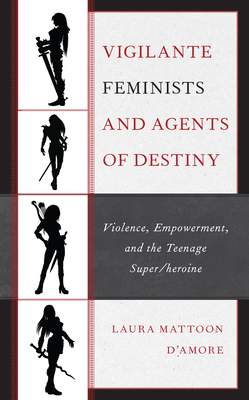This interdisciplinary study examines the relationship between violence, empowerment, and the teenage super/heroine in comics and young adult fantasy novels. The author analyzes stories of teenage super/heroines who have experienced trauma, abduction, assault, and sexual violence that has led to a loss of agency, and then tracks the way that their use of violence empowers them to reclaim agency over their lives and bodies. The author identifies these characters as vigilante feminist teenage super/heroines because they become vigilantes in order to protect other girls and young women from violence and create safer communities. The teenage super/heroines examined in this book are characters who have the ability—through super power, or supernatural and magical ability—to fight back against those who seek to cause them harm. They are a product of and a response to both the pervasive culture of violence against girls and women and a system that fails to protect girls and women from harm. While this book is part of a robust intellectual conversation about the role of girls and women in popular literature and culture and about feminist analyses of comics and YA literature, it is unique in its reading of violence as empowerment and in its careful tracing—and naming—of the teenage vigilante super/heroine, a characterization that is hugely popular and deserves this close reading.
This interdisciplinary study examines the relationship between violence, empowerment, and the teenage super/heroine in comics and young adult fantasy novels. The author analyzes stories of teenage super/heroines who have experienced trauma, abduction, assault, and sexual violence that has led to a loss of agency, and then tracks the way that their use of violence empowers them to reclaim agency over their lives and bodies. The author identifies these characters as vigilante feminist teenage super/heroines because they become vigilantes in order to protect other girls and young women from violence and create safer communities. The teenage super/heroines examined in this book are characters who have the ability—through super power, or supernatural and magical ability—to fight back against those who seek to cause them harm. They are a product of and a response to both the pervasive culture of violence against girls and women and a system that fails to protect girls and women from harm. While this book is part of a robust intellectual conversation about the role of girls and women in popular literature and culture and about feminist analyses of comics and YA literature, it is unique in its reading of violence as empowerment and in its careful tracing—and naming—of the teenage vigilante super/heroine, a characterization that is hugely popular and deserves this close reading.
Get Vigilante Feminists and Agents of Destiny by at the best price and quality guranteed only at Werezi Africa largest book ecommerce store. The book was published by Bloomsbury Publishing Plc and it has pages. Enjoy Shopping Best Offers & Deals on books Online from Werezi - Receive at your doorstep - Fast Delivery - Secure mode of Payment
 Jacket, Women
Jacket, Women
 Woolend Jacket
Woolend Jacket
 Western denim
Western denim
 Mini Dresss
Mini Dresss
 Jacket, Women
Jacket, Women
 Woolend Jacket
Woolend Jacket
 Western denim
Western denim
 Mini Dresss
Mini Dresss
 Jacket, Women
Jacket, Women
 Woolend Jacket
Woolend Jacket
 Western denim
Western denim
 Mini Dresss
Mini Dresss
 Jacket, Women
Jacket, Women
 Woolend Jacket
Woolend Jacket
 Western denim
Western denim
 Mini Dresss
Mini Dresss
 Jacket, Women
Jacket, Women
 Woolend Jacket
Woolend Jacket
 Western denim
Western denim
 Mini Dresss
Mini Dresss






























































